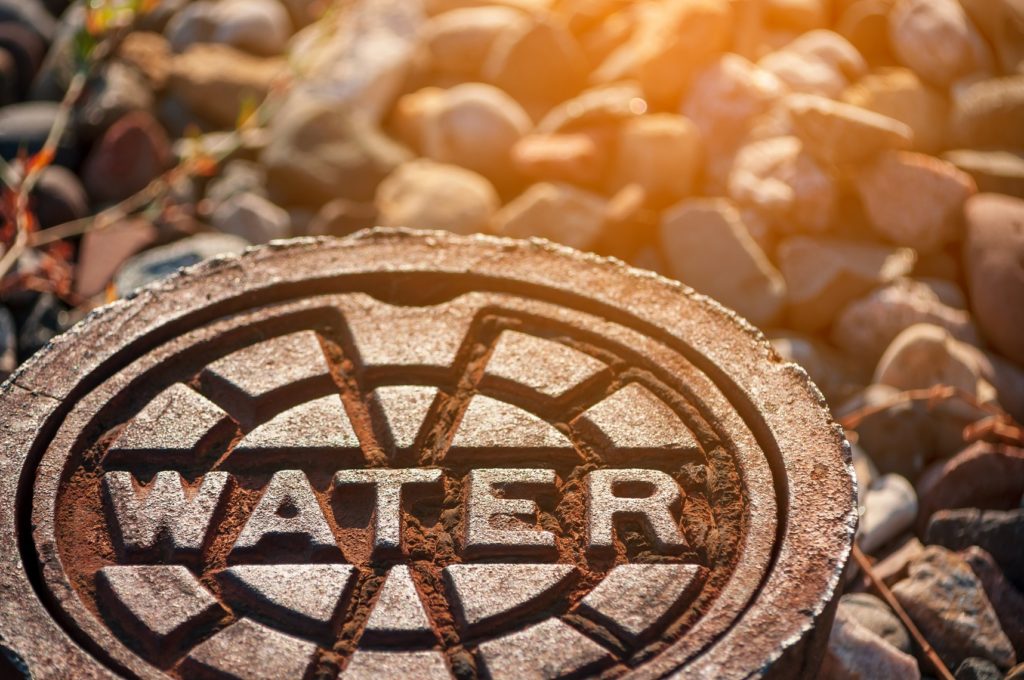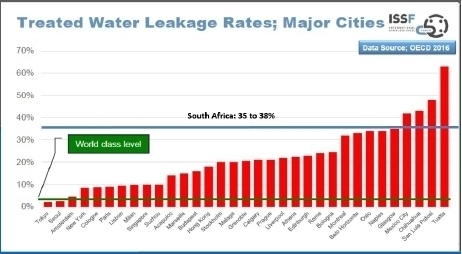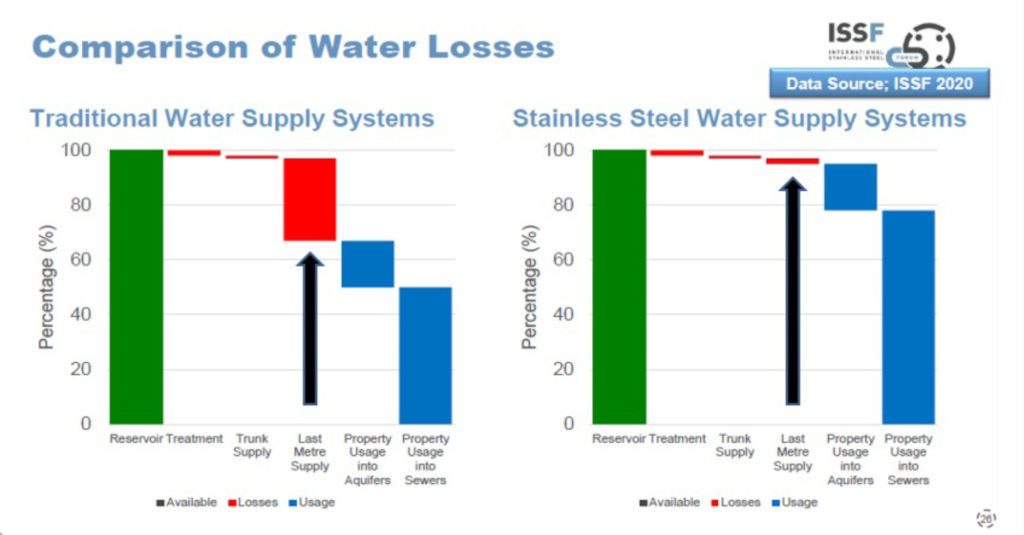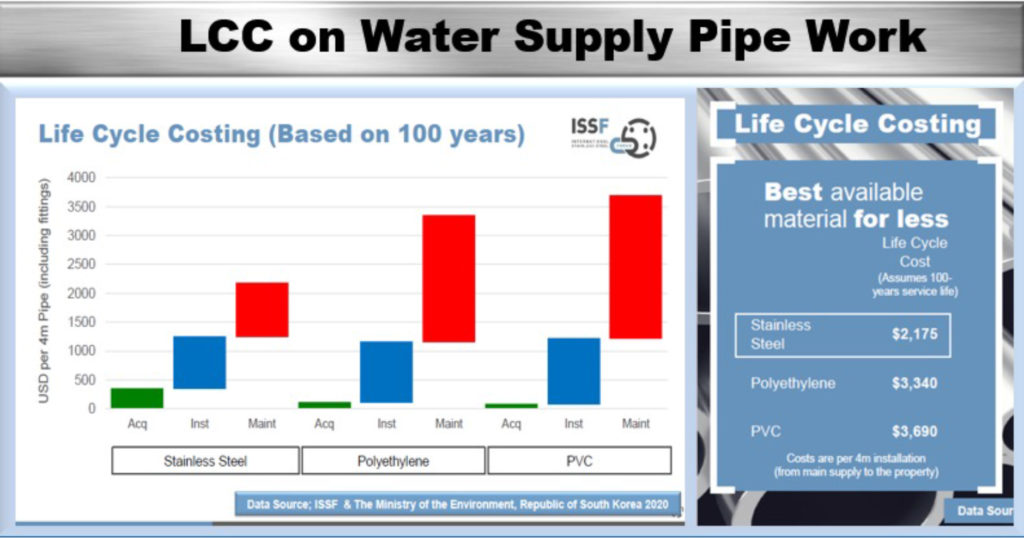- Perspective – May 2021
- Advert : Columbus Stainless
- Global and Local Statistics
- Advert : NDE
- The Best of the GPS E-Newsletters
- Tanzania – Buying into the Bigger Picture
- Rwanda Beckons
- Advertorial : Merging of Multi Alloys operations with EMV Africa
- Sassda Profile – Lerato Mashigo
- Advert : Unique Welding
- Technical Insight
- Sector Focus : Stainless steel is key to South Africa’s water infrastructure recovery
- Advertorial : Coalition Engineering Supplies
- Case Study : A Stainless Solution for Saltwater Challenges
- Advertorial : Air Products
- Obituary : John Edward van Duyn
- Sassda Webinars

In our Sector Focus Feature, Sassda Acting Executive Director Michel Basson looks at how stainless steel can help solve the growing water scarcity crisis through its use in bulk water supply, components like supply line valves and flanges as well as water treatment applications; all of which can create sustainable water supply solutions and drive demand for stainless steel in the local market…
The onslaught of South Africa’s load shedding crisis during the last five years has clearly shown the devastating effects of the lack of sufficient power infrastructure planning in the preceding decade. But electricity is certainly not the only essential resource under pressure when one considers that South Africa is expected to face a water deficit of 17% by 2030 based on the current usage trends, and this shortage will only be worsened by climate change.

However, it is important to realise that water scarcity is not a local problem and has already had a significant global impact on areas with high population densities and low natural water resources. Given the fact that water is increasingly known as the ‘new gold’, any loss of this precious resource, therefore, needs to be mitigated by the largest degree possible.
Even though studies by the International Stainless Steel Forum (ISSF) indicate that a so-called world-class level for water loss due to leakage should be in the order of 10% of the supply volumes, it is estimated that in South Africa the average loss of drinkable water through leakage is in the order of 35 to 38%.

This not only leads to the loss of a scarce resource but given that it refers to treated water, it also amounts to wastage in terms of infrastructure and other resources. The leakage of treated water can be regarded as a potential income loss for municipalities and water regulators. A loss rate of 30% and higher is unacceptable and is unsustainable.
The graphic above depicts how South Africa compares to global statistics from cities audited across the world. The situation is even worse than depicted since cities like Oslo and Glasgow does not have the same lack of natural water resources as is the case with the major geographical surface of our country.
The detection of leaks is complicated by the fact that most of the supply infrastructure is underground or under structures. The ISSF study highlights the fact that most leakages occur at joints and points where other components are connected to the network. It is estimated that more than 890% of leaks occur at joints. Bulk supply lines are usually from plastic due to cost considerations, but the ISSF found that after 15 years these materials show visible material degradation. The use of other metallic materials such as copper, aluminium and galvanised pipework is losing ground to costs, theft, and corrosion.
Stainless to the Rescue
A good place to start with upgrading water supply networks to a more sustainable material, such as stainless steel, would be in the so-called last meter supply. This refers to the last supply line from the bulk supply to the property where the water will be consumed. This was the area in the water supply that showed the highest potential for leaks.
As indicated by the two scenarios above, the traditional supply network fails in this last meter of supply amounting to around 30%. Should this problem be rectified by stainless steel solutions, this can be reduced drastically as shown.
To summarise leakages in the water supply of drink water we can comment that current water supply systems are not sustainable and will fail. These failures can lead to serious health, economic and socio-economic fallout. Leakages can be because of poor workmanship or installation practices, but poor design and lack of long-term thinking are also to blame.
Generally, the best material for the pipework and fittings is not selected, because the final decision is largely guided by material acquisition costs and not total lifespan costs. The current choice of polymers brings hidden problems in the form of micro-particulate contaminants in the system and is porous to hydrocarbons like diesel and oil. A recent study from North West University on the contamination of drinking water by micro-plastics is disturbing.
Stainless steel is the only sustainable solution, but as mentioned, the initial procurement and installation of stainless steel equipment remain a major hurdle in implementing this solution. When analysing water systems and the materials involved using Life Cycle Costing (LCC) analysis the position becomes clear on the potential real future saving.
International evidence
In Tokyo and Seoul, authorities were able to reduce leakages to less than 3% by converting to stainless steel. Repairs in Tokyo dropped from 70 000 to less than 10 000 per year. This translates to a move from 190 repairs a day to only 25 repairs a day.
Seoul showed the same trend with an additional 40% reduction in the requirement for water treatment plants. However, patience is required and full implementation for the two cities spanned over two decades. It was also shown by the ISSF study that cost saving can be achieved after a 45% conversion point. This can be regarded as the break-even point for this type of project.
Sassda’s studies show that in terms of LCC, 3CR12 will usually be at 50% of the lifespan cost compared to coated (painted or galvanised) carbon steel. Over a life span, even the more costly duplex materials show to be around 70% less costly to operate than coated mild steel.

How does stainless steel compare to polymers in the case of water supply?
The comparison in the graphic above clearly indicates the perceived high input costs for stainless steel in water systems. The real test lies in the maintenance over the lifespan. Stainless steel requires virtually no maintenance and as such turns out to be the more cost-effective solution.
This has been proven locally by the Drakenstein Municipality that has been able to reduce losses of drink water from above 30% to below 10% in 14 years. This was achieved by a strategy of combining polymer bulk water supply lines with stainless steel joints, fittings, and equipment. This illustrates that this type of critical intervention is possible in South Africa.
Stainless steel is durable, hygienic and will outlast competitor materials and is therefore extremely suitable for drink water infrastructure. However, we must accept that the initial capital outlay may be more for stainless steel. With LCC stainless steel shows itself in most cases to be a very cost-effective solution, especially in water supply networks.

